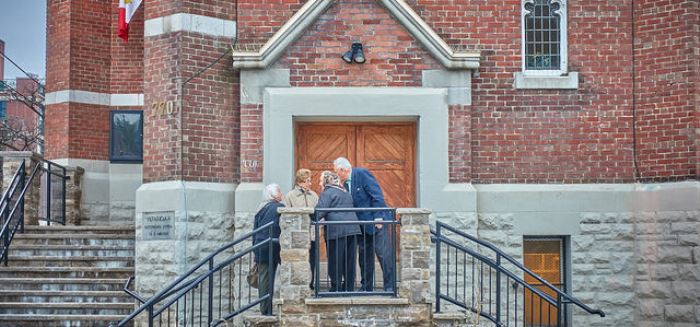This week, Charles “Chick” Lane continues his two-week series on stewardship ministry with retired people. I read it on my laptop, but even so, I wanted to underline and highlight each point, plus write a star in the margin! What a fine list of strategies—particularly for retired members, but certainly not limited to them. All of us can take some guidance from Chick’s stellar list below.
Yours truly,
Adam Copeland, Center for Stewardship Leaders
Stewardship Ministry with Retired People (Part 2)
Charles R. Lane
Last week I discussed (and hopefully at least partially debunked) three assumptions I think churches have about retired people. This week I want to suggest five specific strategies that I hope can help your congregation employ for more effective stewardship ministry with retired members.
Before launching into the strategies, let me say that I believe most congregations ought to have a segmented stewardship strategy for several demographic groups. You should have a stewardship strategy for children and youth and a strategy for at least three different age groups of adults. This will be more work than doing the tried and unsuccessful “one size fits all” stewardship ministry, but it will be worth the effort.
Here are five possible stewardship strategies for retired people.
1. Invite us into a new area of ministry.
We have been around for a while, so you probably know us. You know what we have done for a living before we retired. You know what we like to do and what we have done in the congregation in previous years. When a new opportunity comes up that needs volunteers, think about us individually, and ask those of us whom you think might be interested. If you ask us individually, we won’t always say yes, but we do like to be noticed and needed, so your chances are pretty good.
2. Talk to us about percentage giving.
Obviously, this is a strategy that crosses all age groups. When some of us play the “I’m living on a fixed income” card, change the topic on us. Invite us to think not about what we have (or don’t have), but to think instead about what percentage of what we do have we want to give away. We don’t have a lot of the financial obligations of younger people, so talking with us about giving a tithe to the work of the church is really very appropriate.
3. Invite us to give from accumulated assets.
Not all retired people have stock they have owned since the 1960’s, but some do. Many of us have accumulated assets that have appreciated significantly in value and will result in a major tax hit if we sell them. I’m amazed at how many people with assets like this have never thought about giving them to the church. The tax code makes this a very attractive way to give. Some of us have Required Minimum Distributions from IRAs that we can give to the church and not have to declare the income. Tell us how this works, and invite us to think outside the box for our giving.
4. Encourage us to consider electronic giving.
Many of us travel a lot. We want to see our grandchildren. We want to see the world. We want to escape cold weather. We aren’t always in church. Electronic giving is not just for adults under 50. Inviting us regularly to consider electronic giving will bear fruit. The congregation of which I am a member receives about 1/3 of its giving electronically, and many of those who give this way are my peers. This is another strategy that crosses all age groups.
5. Invite us to make a legacy gift.
Like everyone else, we’d rather not talk about our mortality. We do know that the end of life is closer now than it was twenty years ago. For many of us, we will have more money available to give at death than we will ever have during our life. Many of my peers are worried about the possibility of outliving their money. When someone says that, invite them to make a gift from their estate. Of course we want to leave money to our kids, but most of us don’t need to leave all of it to them. How about a tithe of the estate to the church? Invite us, and the rest of the congregation, on a regular schedule — perhaps every six months — to consider the church in our estate plan.
I hope at least a couple of these strategies will make a difference in your stewardship ministry with retired people.
For More Information
Rev. Charles Lane is co-author, most recently, of Embracing Stewardship: How to Put Stewardship at the Heart of Your Congregation’s Life. He serves as a pastor of Lord of Life Lutheran Church, and is past director of the Center for Stewardship Leaders.

